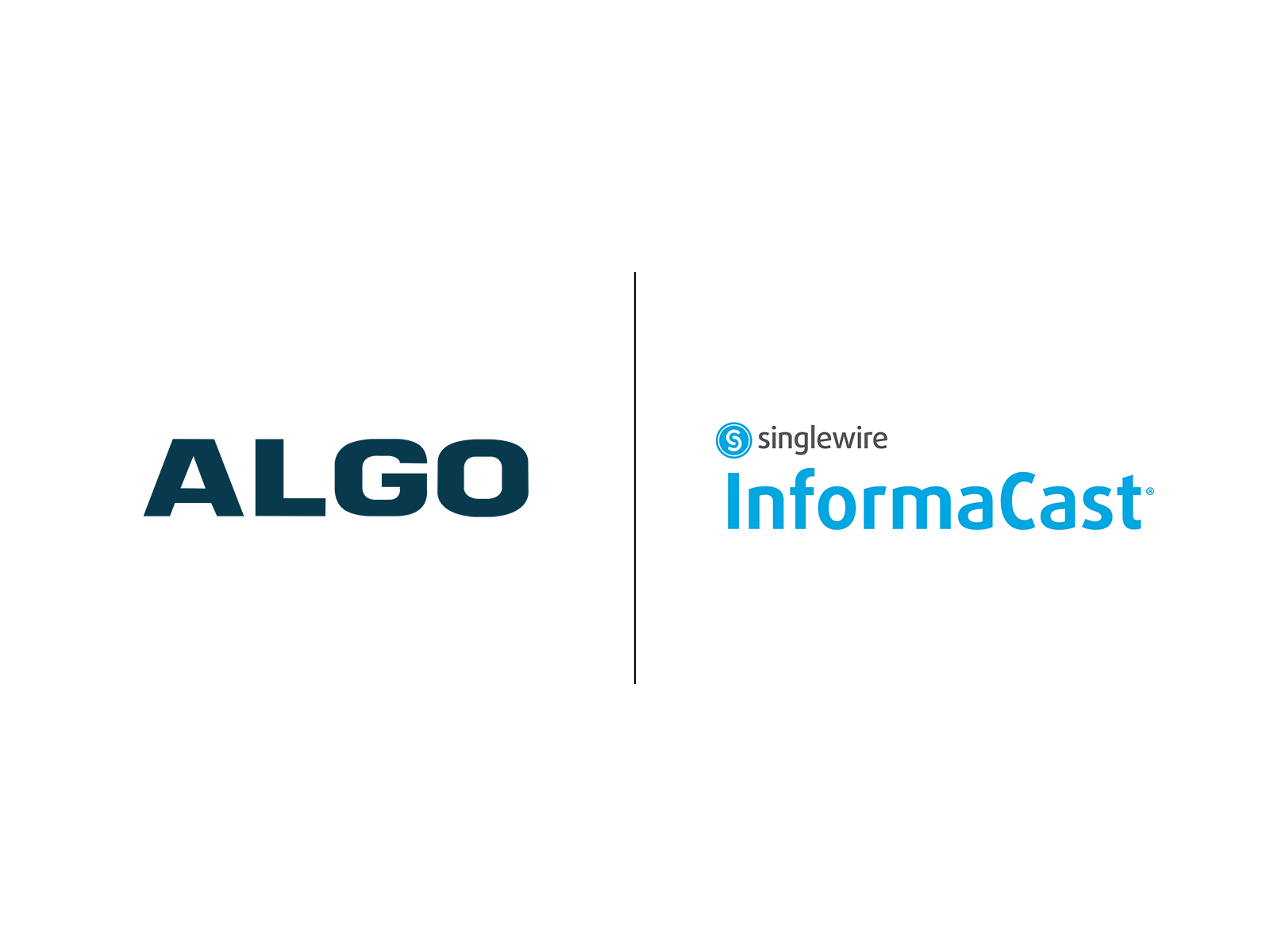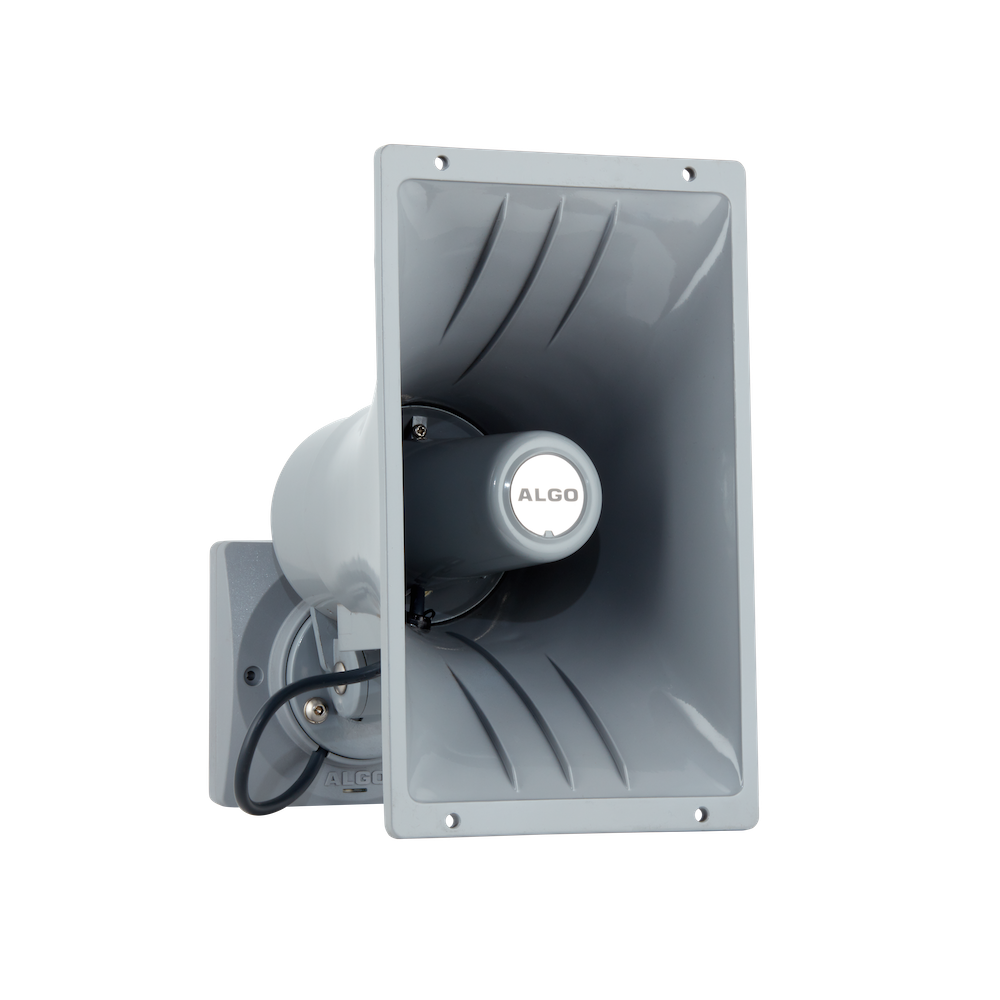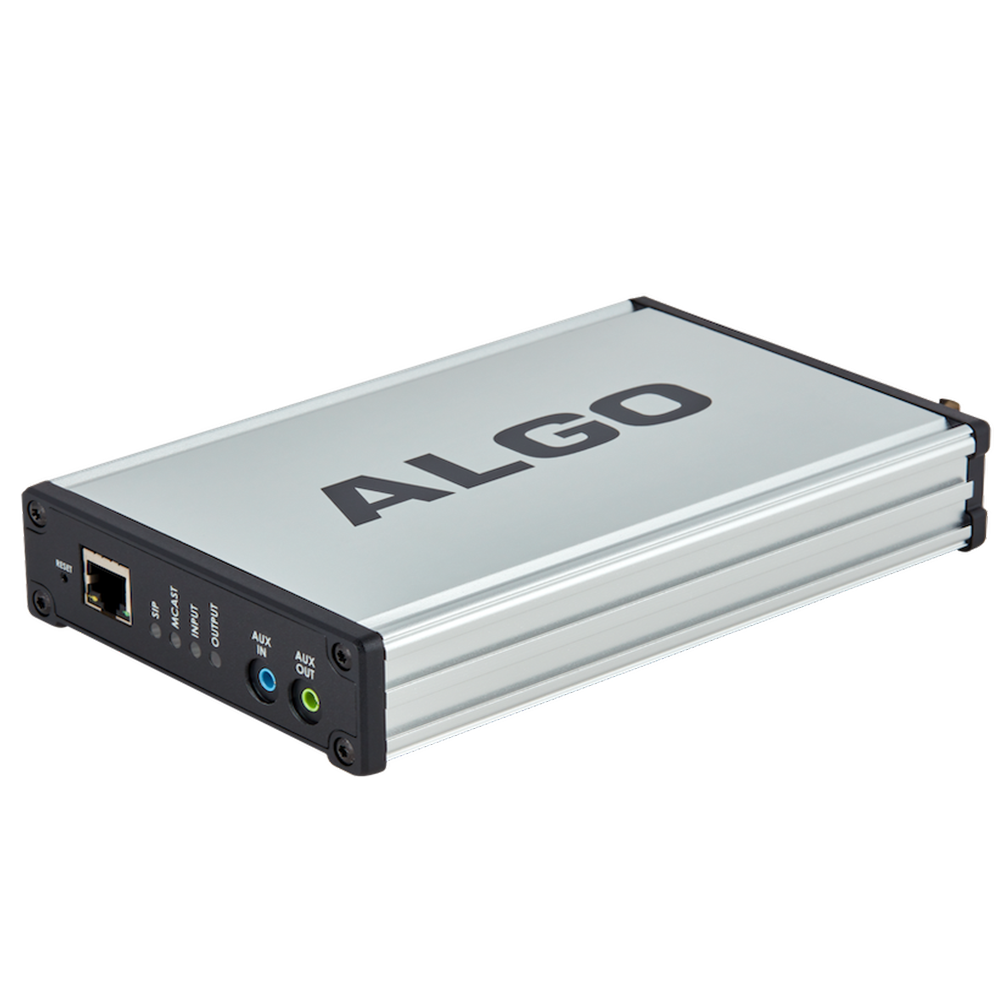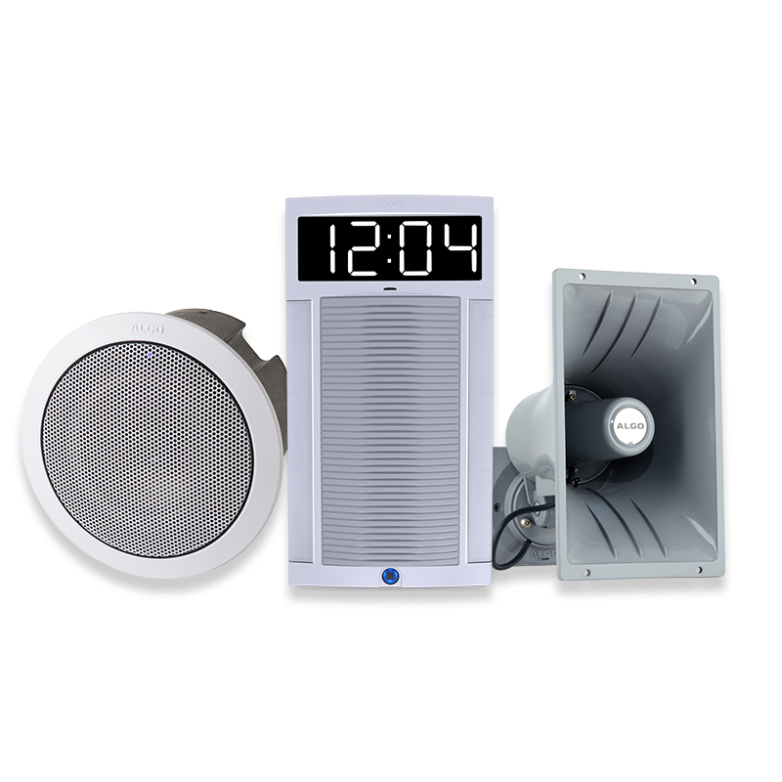Singlewire InformaCast Compatibility
As a Singlewire Solutions Partner, Algo products have been certified for compatibility and interoperability.
Deploy Algo’s suite of Singlewire certified IP speakers, paging adapters, and strobe lights for your voice paging and alerting requirements within your Singlewire ecosystem.
Explore Algo compatibility with Singlewire InformaCast soLUTIONS

Note: 8180/8186/8188/8189/8190/8190S/8196/8198/8301/8410/8420/8128/8138 support Singlewire which require the SL7100 Singlewire License per endpoint. As an alternative, the following part numbers are available to order which include the Singlewire license noted above: 8180-IC, 8186-IC, 8188-IC, 8189-IC, 8190-IC, 8190S-IC, 8196-IC, 8198-IC, 8301-IC, 8410-IC, 8420-IC, 8128-IC, 8138-IC.
DEPLOYING ALGO SOLUTIONS IN A SINGLEWIRE informacast ENVIRONMENT
Algo products are feature-rich, supporting secure SIP using TLS and SRTP, central provisioning, and network supervision. Multicast is also supported to permit solutions to be scaled over any size building, campus, or enterprise in education, healthcare, government, commercial office, manufacturing, utility / plant, transportation, distribution / warehouse retail, and hospitality sectors, to name a few.
Any InformaCast telephone supporting RTP multicast will permit audio from voice paging, notification alerting, and scheduled announcements / bells to be simultaneously broadcast over Algo IP speakers and telephones. Strobe lights can also be included in a multicast for additional notification awareness.
Integrating a legacy analog paging system to an InformaCast telephone system is simplified with Algo paging adapters. SIP registration and multicast are supported on Algo paging adapters to ensure audio from voice paging, emergency notification alerting, and scheduled announcements / bells can be easily bridged to most traditional analog amplifiers. This makes it possible for audio to be simultaneously broadcast over legacy analog infrastructure, multicast-supported telephones, and Algo IP speakers.
With Algo paging adapters there is no limitation to creating a hybrid solution to achieve complete integration of analog and IP endpoints. Regardless of how future needs may change for any organization, business, or enterprise, the Algo IP paging system is flexible to accommodate public address (PA) application requirements.
Algo offers SIP compliant endpoints for voice paging, alerting and, secure door entry, all of which integrate seamlessly into your Informacast ecosystem. Algo suite of InformaCast compatible IP Endpoints include:
 |
|
|---|---|
| Platform | InformaCast (Fusion) |
| Latest Firmware Tested | v3.4.4 |
| Tested & Confirmed Compatible | |
| Documentation Available | |
About InformaCast
Singlewire InformaCast is a mass notification platform that enables organizations to send multi-format alerts to various devices, including IP phones and digital signage. Commonly used in schools, hospitals, and businesses, it not only facilitates emergency communications but also supports routine announcements and schedules. The software integrates with other safety systems like fire alarms and door locks for a holistic safety approach. It offers multiple deployment options, such as on-premises, cloud-based, and hybrid models, to suit different organizational needs.
Frequently Asked Questions
How are Algo devices integrated with Singlewire Informacast?
Algo simplifies the integration of its devices with Singlewire InformaCast by offering a range of Singlewire-certified IP endpoints. A selection of part numbers that come bundled with the necessary Singlewire license, ready-to-use devices, are available for order: 8180-IC, 8186-IC, 8188-IC, 8189-IC, 8190-IC, 8190S-IC, 8196-IC, 8198-IC, 8301-IC, 8410-IC, 8420-IC, 8128-IC, and 8138-IC. If you have a device that isn’t an IC product, you can still make it IC-compatible by obtaining the license separately.
To facilitate integration, you can connect these products to the InformaCast Server. There are three efficient discovery methods to automatically locate your device, identify the server, and download the necessary configuration template:
- SLP (Service Location Protocol)
- DHCP Option 150
- DNS SRV
Once the license is successfully installed, the device will automatically initiate the registration process using one of the three methods. Just make sure that at least one of these methods is correctly set up. Once the endpoint is recognized, it will become visible in the IC portal, specifically under the IP Speakers tab. At this juncture, your device is primed to be configured according to the specifications outlined in your InformaCast scope. For more detailed instructions, please visit Informacast’s IP Speaker Registration and Configuration Guide here.
Can I control the volume for the IP speakers and the flashing pattern for the strobes via Informacast?
Absolutely. Informacast gives you the power to control both the IP speaker volume and strobe light patterns. Once your device is all set up, you’re free to modify the settings however you prefer. When you’re setting up an Informacast event, you’ll find the “Priority” option that allows you to control the strobe light patterns.
Can I register my device manually if automatic registration fails?
Certainly. Within the endpoint’s “Advanced Settings” Admin tab, you’ll find the InformaCast mode offering two distinct options: “Auto” and “Manual”. Opting for the manual route allows you to enter your server information manually, should the need arise due to an unsuccessful automatic registration attempt.
Do Algo IP endpoints function with Informacast Advanced Notification and Informacast Fusion?
Certainly, they are designed to work effectively with either platform. Your Algo IP endpoints are versatile and can seamlessly integrate with either Informacast Advanced Notification or Informacast Fusion. You have the flexibility to choose the solution that best suits your requirements.
Where can I buy IC licenses?
You can conveniently purchase IC licenses for specific Algo products through this link: Algo IC License. It’s important to note that each endpoint deployed requires its own Singlewire InformaCast License. If you have any further queries or need assistance, feel free to contact us.
How can I monitor the status of my Algo IP endpoint via Informacast?
Your InformaCast server takes on the responsibility of tracking device status and promptly reporting whether they are online or offline. To monitor the status, navigate to the “IP Speakers” tab, which conveniently encompasses all your IP endpoints. This centralized location provides an overview of the devices’ current status.





